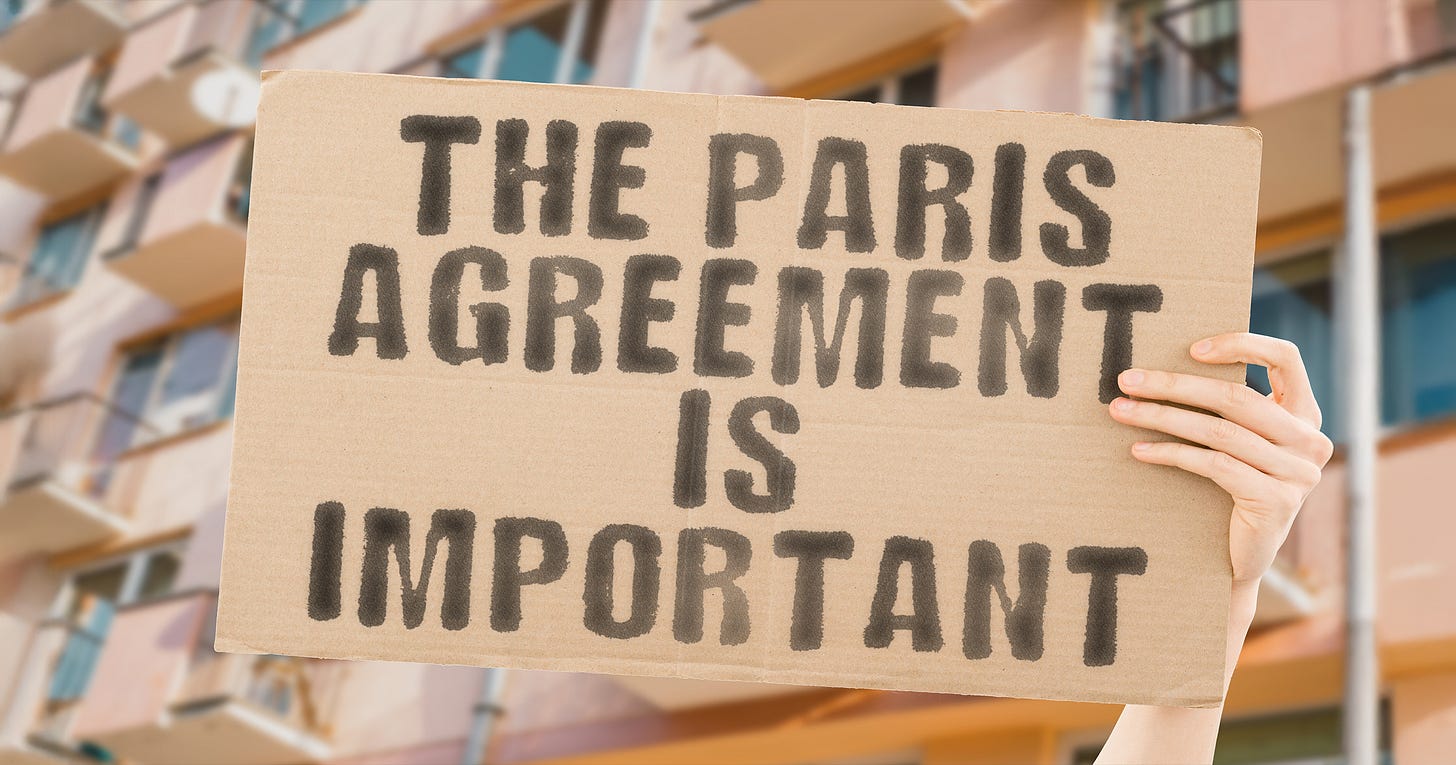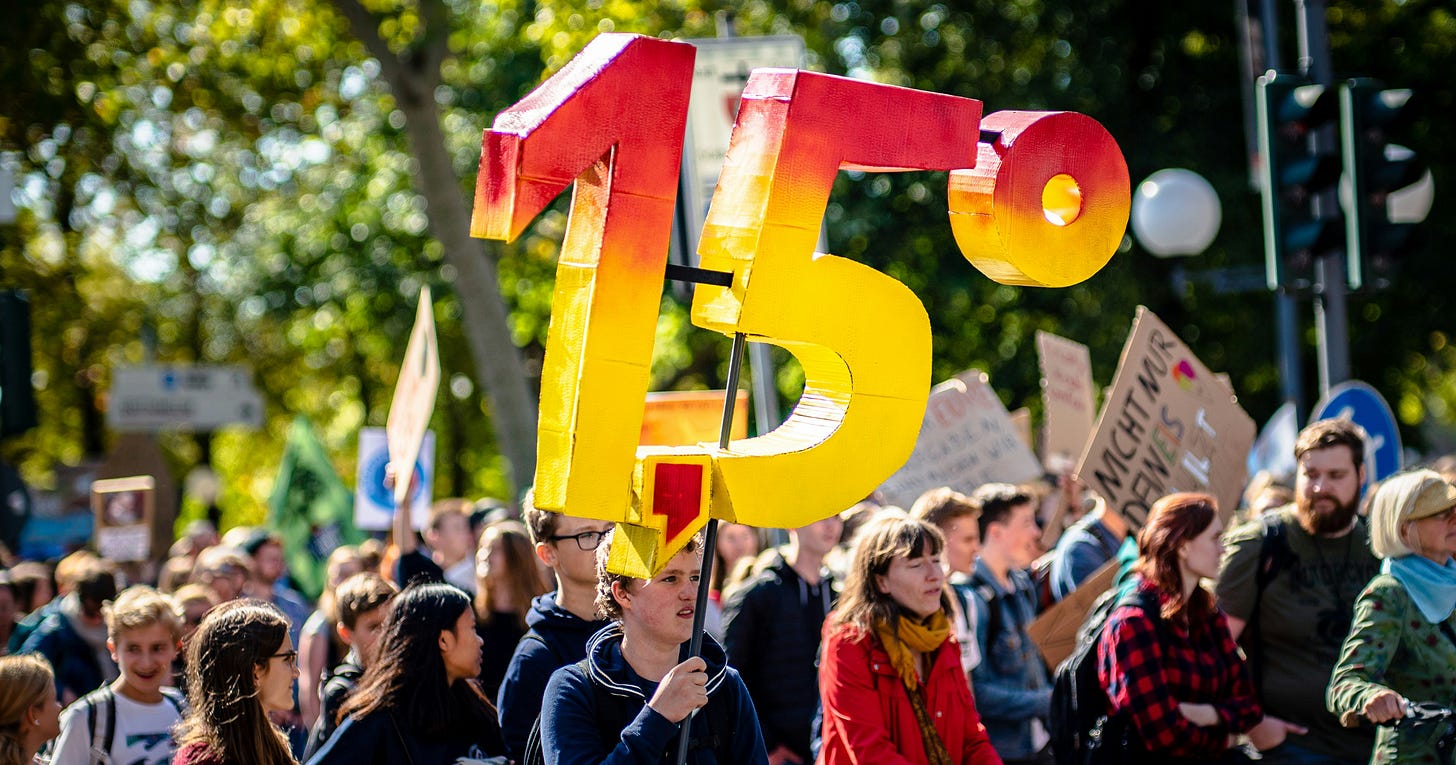What the world has gained (and lost) since the Paris Agreement
The Paris Agreement turns 10, a planet on the brink, and make your vote count
This coming week, countries will gather at COP30 in Belem, Brazil for the latest round of climate negotiations. While the U.S. federal government is not officially attending, a number of state governors and dozens of other U.S. leaders will be there.
Regardless of where they come from, attendees are focusing on implementing existing climate goals. This includes strengthening ways to finance climate mitigation & adaptation, and addressing issues like forest protection and deforestation.
Given that this is the 30th such meeting since the signing of the United Nations Framework Convention on Climate Change in 1992, and the 10th anniversary of the Paris Agreement, it’s a good time to ask: Where is the world at now? What progress have we made, and what remains?
Here’s a round-up of the good news and the not-so-good news on where the world stands, ten years on.
Did you know that the Paris Agreement has already changed the trajectory of our future?
At the time it was signed ten years ago, I was writing the scenarios chapter of the Fourth U.S. National Climate Assessment. My co-authors and I crunched the numbers and determined that, from 2000 to 2015, global emissions had been tracking a scenario that would take the world to 4-5C (that’s 7-9F) by the end of the century.
But you know what? We aren’t heading that way anymore! Thanks to all the policies enacted since the Paris Agreement and the advances in clean energy over the last decade, we’re currently heading towards a world that’s 2.8C (5F) warmer. And if all of the countries’ Nationally Determined Contributions are implemented—many of which were announced at a special meeting at the United Nations in September which I opened with my colleague Johan Rockstrom—the warming will be around 2.4C (4.3F).
While that’s not enough to limit warming to the Paris goals of 1.5C or 2C, it is still much better than the world we were headed to before Paris; and we can still do more. As
What about climate energy? According to the Rocky Mountain Institute, the clean tech revolution is “exponential, disruptive, and now.”
By the end of the decade, 14 countries will source all their power from renewable sources and seven countries are already doing so—Norway, New Zealand, Iceland, Costa Rica, Kenya, Bhutan, and Paraguay. Wind and solar are cheaper to build than fossil fuel plants almost anywhere on the planet, and China makes more money from its clean energy exports than the U.S. does from its fossil fuel exports.
Clean technology has become dramatically more affordable, while global investment has multiplied almost ten times and solar output has increased twelvefold. Today, 1 in 5 cars sold worldwide are electric, up from 1 in 25 in 2020. “The energy system is being transformed by the exponential forces of renewables, electrification, and efficiency,” the RMI report says. And land use is changing too: heading into COP30, Brazil’s deforestation rates have hit an 11-year low.
Want to see where your country ranks on emissions, clean energy and climate policy? Check out this map from the Climate Change Performance Index. Currently, Denmark, the Netherlands, and the UK are in the lead, followed by the Philippines and Morocco!
We now live on a “planet on the brink” as global warming accelerates, according to the 2025 State of the Climate report. The authors evaluated 34 of the planet’s vital signs, including carbon pollution, ocean temperature, air temperature, and extent of sea ice, and found 22 to be at record levels.
2024 was the warmest year on record and 2025 is going to surpass it: a signal of “an escalation of climate upheaval.” The authors found global efforts to curb carbon emissions extremely insufficient to avoid dangerous impacts, and wrote that this marks “the beginning of a grim new chapter for life on Earth.”
“We are hurtling toward climate chaos. The planet’s vital signs are flashing red. The consequences of human-driven alterations of the climate are no longer future threats but are here now,” the report states. “This unfolding emergency stems from failed foresight, political inaction, unsustainable economic systems, and misinformation. Almost every corner of the biosphere is reeling from intensifying heat, storms, floods, droughts, or fires. The window to prevent the worst outcomes is rapidly closing.”
Although the COP negotiations are technically between countries, many representatives from city, state, province, or other regional governments will be in Belem, too. This is why our voices and our votes matter at every level: because they can help catalyze change in the places where we live.
For example, in the U.S., California generated 100 percent of its electricity from renewable sources last year. The city of Chicago, whose climate impacts analysis I led in 2008, is powering all of its more than 400 municipal buildings with clean energy. In Detroit, nearly 1,400 urban farms “not only address food insecurity but also serve as a model for sustainable land use in post-industrial cities,” as this article explains.
Cities around the world, from Belfast to Budapest, are incorporating climate into planning for healthier and more resilient neighbourhoods. States and provinces from Australia to Brazil are setting their own emission reduction goals, and their plans to meet them. They’re building green schools in West Kalimantan, Indonesia and setting up “climate desks” in every local government council in Cross River State, Nigeria.
For all the negative tipping points we seem to be surpassing in the natural world, there are also scores of positive tipping points that can be triggered by actions we take. As Matt Simon writes here, “People can influence communities, communities can influence cities, and cities can influence nations. These critical junctures, then, can spread like a contagion—in a good way.”
Love Talking Climate? Help it grow 🌱
By upgrading to a paid subscription on Substack or Patreon, you’ll be keeping this work alive, helping me and my small team continue to share the science, stories, and solutions that matter most.
Subscribers get exclusive access to my brand-new video series: conversations with Talking Climate guest editors like Christiana Figueres (coming right after COP!), and inside looks at the climate world, from trolls to trends and everything in between.
If you believe climate conversations matter, let’s keep them going together 💚
UPCOMING EVENT
Mon, Nov 17th at 11am MT/1:30pm ET - Calgary Climate Symposium with City of Calgary - virtual










